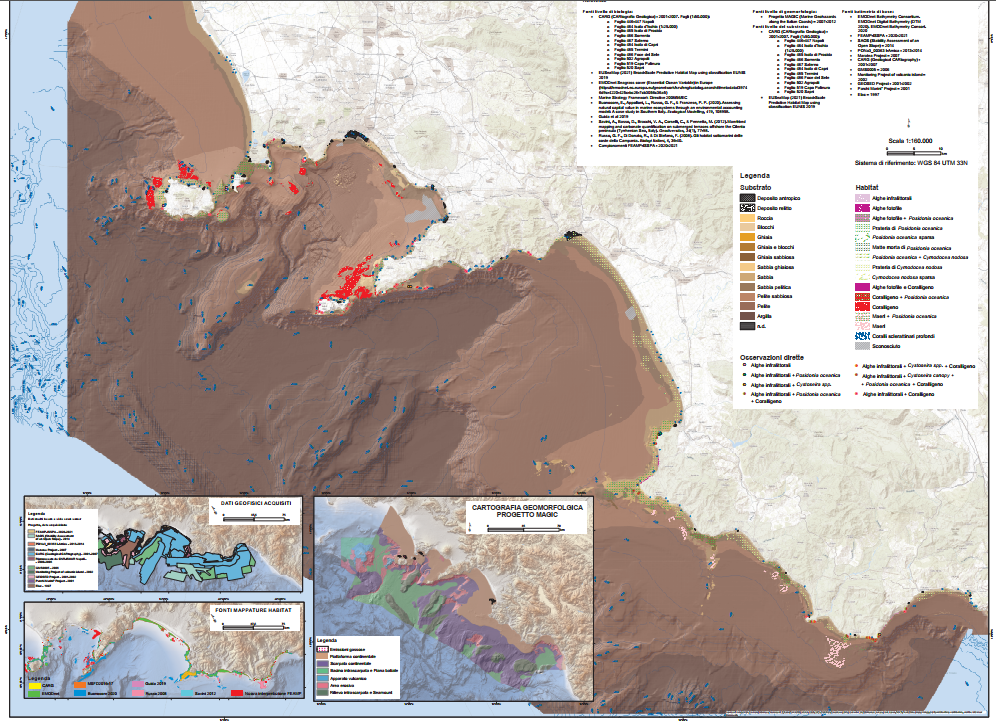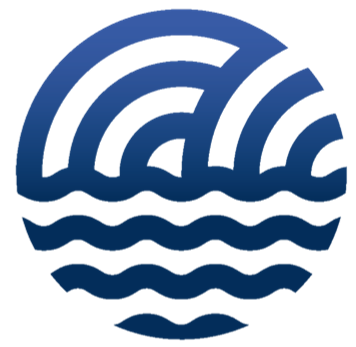geoscientificInformation
Type of resources
Available actions
Topics
INSPIRE themes
Provided by
Years
Formats
Representation types
Update frequencies
status
-
Oceanographic campaign on board the CNR R/V Gaia Blu from the 12th to the 22th of May 2024 in the Gulf of Naples The cruise joint the objectives of three projects, all of them intended at exploring, monitoring and restoring deep-sea habitats, the LIFE DREAM (https://www.life-dream.eu/), Spoke 1 and Spoke 2 of the PNRR NBFC (https://www.nbfc.it/en) and the HE REDRESS (https://redress-project.eu/) projects. The habitat targeted by the cruise are the cold-water corals, the deep-water oysters reefs, and the deep black coral forest, with the aim to: - restore the vulnerable marine habitats by removing the marine litter; - restore the vulnerable marine habitats by installing artificial reefs on the seafloor that provide hard substrate suitable for recruiting juvenile individuals; - monitor the vulnerable deep-sea habitats and the impacts of restoration actions by means of permanent deep observation systems; - increase knowledge and awareness on these deep-sea habitats, their ecosystem services and the importance of restoring, conserving and protecting them.
-

Oceanographic campaign on board the CNR R/V Gaia Blu from the 28th March to the 11th of April (LEG1) and then from the 8th May to the 14th May 2024 (LEG2), in the following monitoring sites: Santa Maria di Leuca, Monopoli continental shelf, Bari Canyon, Dauno Seamount, and Dohrn Canyon. The cruise joint the objectives of three projects, all of them intended at exploring, monitoring and restoring deep-sea habitats, the LIFE DREAM (https://www.life-dream.eu/), Spoke 1 and Spoke 2 of the PNRR NBFC (https://www.nbfc.it/en) and the HE REDRESS (https://redress-project.eu/) projects. The habitat targeted by the cruise are the cold-water corals, the deep-water oysters reefs, and the deep black coral forest, with the aim to: - restore the vulnerable marine habitats by removing the marine litter; - restore the vulnerable marine habitats by installing artificial reefs on the seafloor that provide hard substrate suitable for recruiting juvenile individuals; - monitor the vulnerable deep-sea habitats and the impacts of restoration actions by means of permanent deep observation systems; - increase knowledge and awareness on these deep-sea habitats, their ecosystem services and the importance of restoring, conserving and protecting them.
-
L'atlante fornisce una base conoscitiva naturalistica dei fondali marino-costieri, dei loro principali popolamenti, fra i quali le praterie di Posidonia oceanica ed il Coralligeno. Il rilevamento dei dati cartografati tramite interpretazione di repertorio aerofotogrammetrico, di mappatura acustica con tecnica side scan sonar e di morfobatimetrica di dettaglio con tecnica multibeam, è integrato da materiale bibliografico scientifico di settore e dalle banche dati di Regione e Arpal. Il riferimento cartografico a terra è la CTR 1:10000. Il livello è un aggiornamento della mappatura allegata alla pubblicazione Atlante degli Habitat Marini della Liguria (Diviacco/Coppo-2006), così come approvato con D.G.R.n.141 del 28/02/2020.
-

Il dataset descrive la distribuzione degli habitat marini d'interesse comunitario (sensu Direttiva 92/43/CEE) all'interno delle Zone Speciali di Conservazione (ZSC) lungo le coste del Lazio La pubblicazione di riferimento è Ardizzone G., Belluscio A e Criscoli A., 2018. Atlante degli habitat dei fondali marini del Lazio. Sapienza Università Editrice.
-

Benthic habitat map of the Campania Region produced in the framework of the FEAMP-ISSPA Project by CNR-ISMAR
-
First seabed map of the shallow-water areas of Lampione, the islet of the Pelagie Islands Marine Protected Area (Sicily Channel, Italy). The seafloor was mapped from the coast to a depth of about 75 m, using high-resolution multibeam systems (both for bathymetry and backscatter) along with ground-truth data in the form of grab samples and ROV videoobservations. By integrating these original data, a first seabed classification was produced through the use of the Remote Sensing Object Based Image Analysis, a semi-automatic segmentation approach. The resulting 1: 5.000 scale map includes sediment types and habitat distribution contributing to the knowledge of the peculiar marine ecosystem observed at Lampione. In particular, the map provides the first indication of the wide occurrence of rhodolith/maërl habitats at Lampione, which are among the most important ecosystems in the Mediterranean Sea.
-
Seabed mapping in the Pelagie Islands marine protected area (Sicily Channel, southern Mediterranean) using Remote Sensing Object Based Image Analysis (RSOBIA)
-
A seabed map around Lampedusa, the largest island of the Pelagie Islands Marine Protected Area (Italy, western Mediterranean). The seafloor was mapped using bathymetry and backscatter multibeam systems along with an underwater camera for direct observations and ground truthing, from the coastal area to about 50 m depth. The map was produced to monitor the present-day distribution of the Posidonia oceanica meadows around the Island. P. oceanica is the most important endemic seagrass species of the Mediterranean Sea and it can form meadows or beds extending from the surface to 40–45 m depth. These meadows provide habitat for a large community, thus increasing biodiversity of the coastal zone, stabilizing sediments and reducing coastline erosion. The seagrass meadows are susceptible to regression as response to specific impact, thus their presence and abundance can be considered an indicator of the overall environmental quality of the coastal zone. The European Union’s Habitat Directive (92/43/CEE) includes P. oceanica beds among priority habitats and, according to the Water Framework Directive (2000/60/EC), each EU Member State defined the method to evaluate the health status of the seagrass; more recently, within the Marine Strategy Framework Directive (MFSD) (2008/56/EC), P. oceanica has been selected as an indicator of the Good Environmental Status for marine areas. Consequently, the Pelagie Islands Marine Protected Area launched a project to assess the conservation status and map the distribution of P. oceanica meadows. The resulting 1:15,000 scale map includes information about the Mediterranean seagrass and the distribution of five acoustic facies reflecting hard lithologies and soft substrates. The Lampedusa seabed map provides new information which contributes to the development of a detailed benthic habitat map and a more comprehensive maritime spatial planning of this Marine Protected Area.
-
The shapefile contains the marine substrates of the Campania Region (inside 24 NM) produced in the framework of the FEAMP-ISSPA Project by CNR-ISMAR starting from the CARG cartography and the EUSeaMap from EMONnet.
-
The shapefile contains the priority habitats of the Campania Region (inside 24 NM) produced in the framework of the FEAMP-ISSPA Project by CNR-ISMAR. It is the results of a bibliographic review coupled with new data (FEAMP-ISSPA) and recovered geophysics data collected by CNR-ISMAR through the years. The shapefile includes coralligenous, maerl, Posidonia oceanica, Cymodocea nodosa, photophilic algae, bioconstructions, and cold-water corals.
 CNR-ISMAR
CNR-ISMAR
